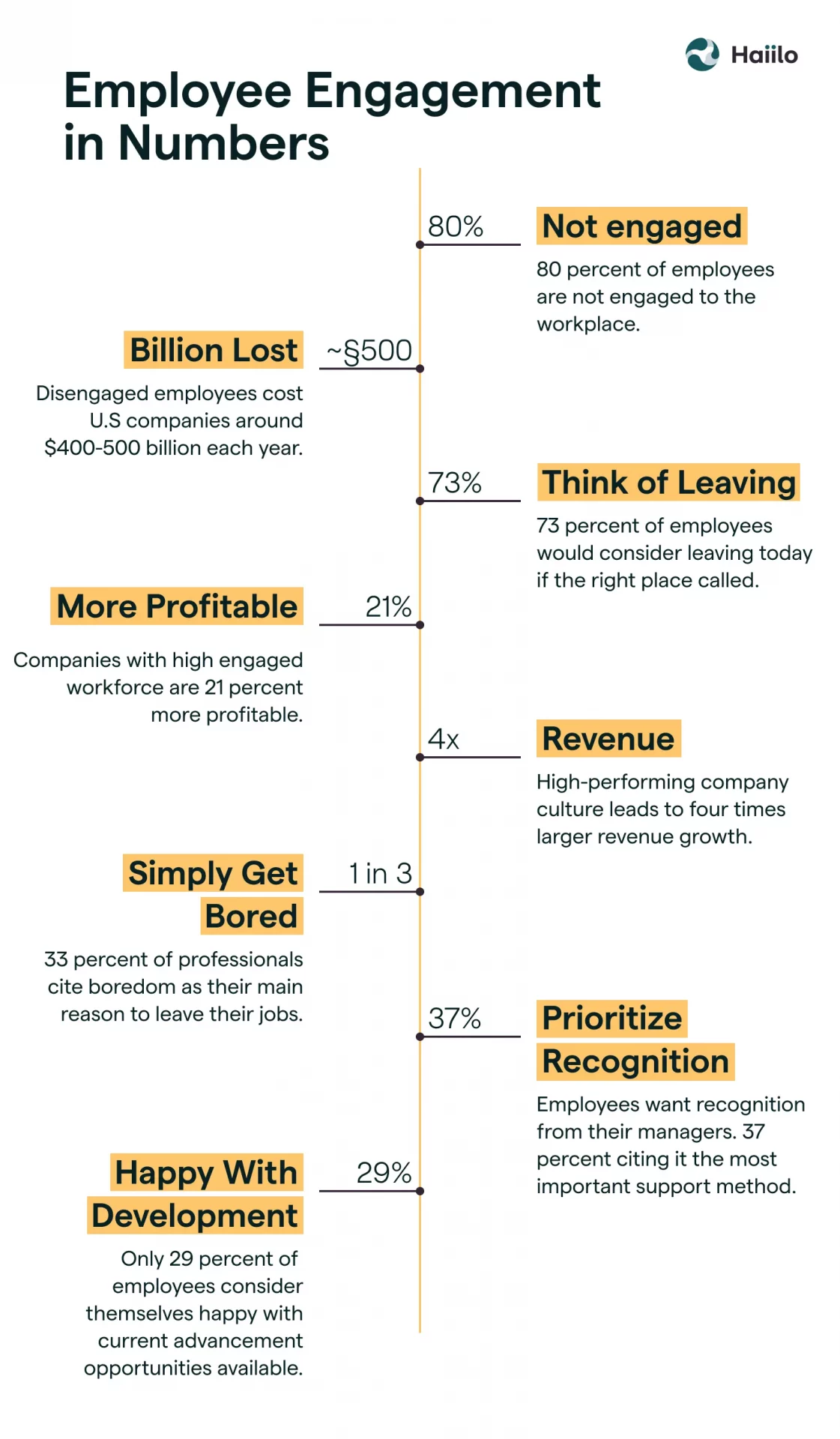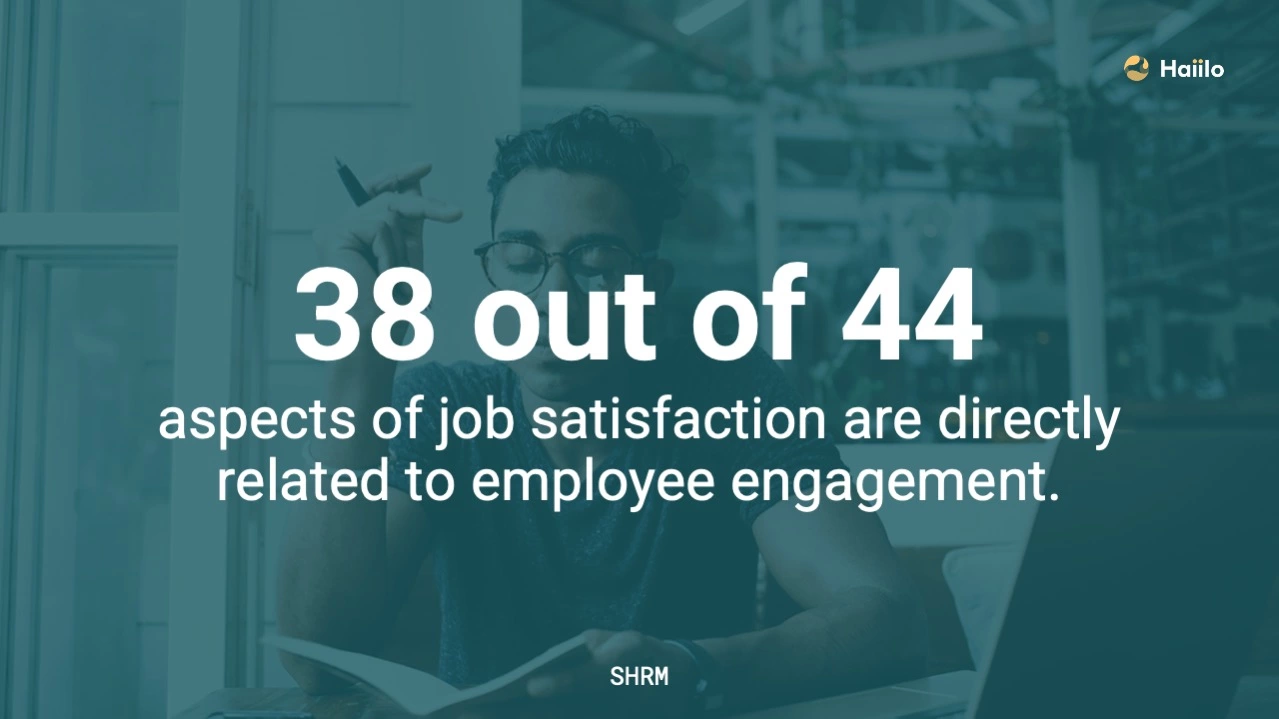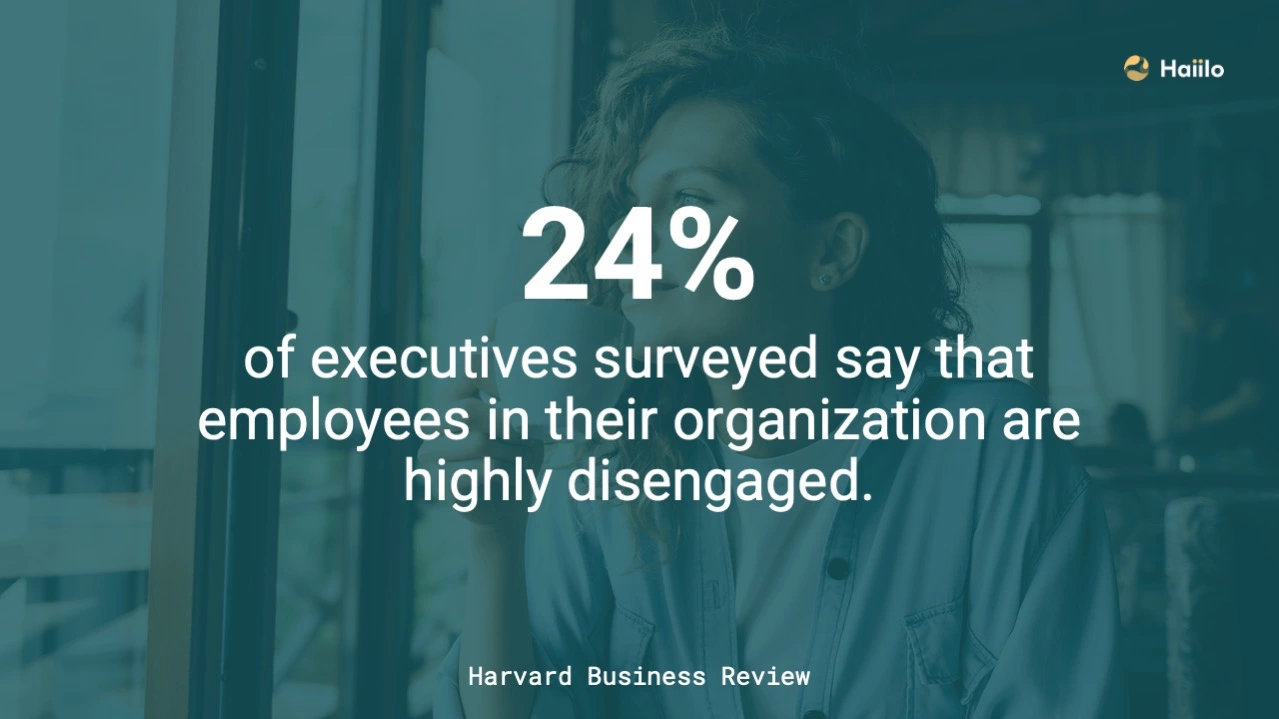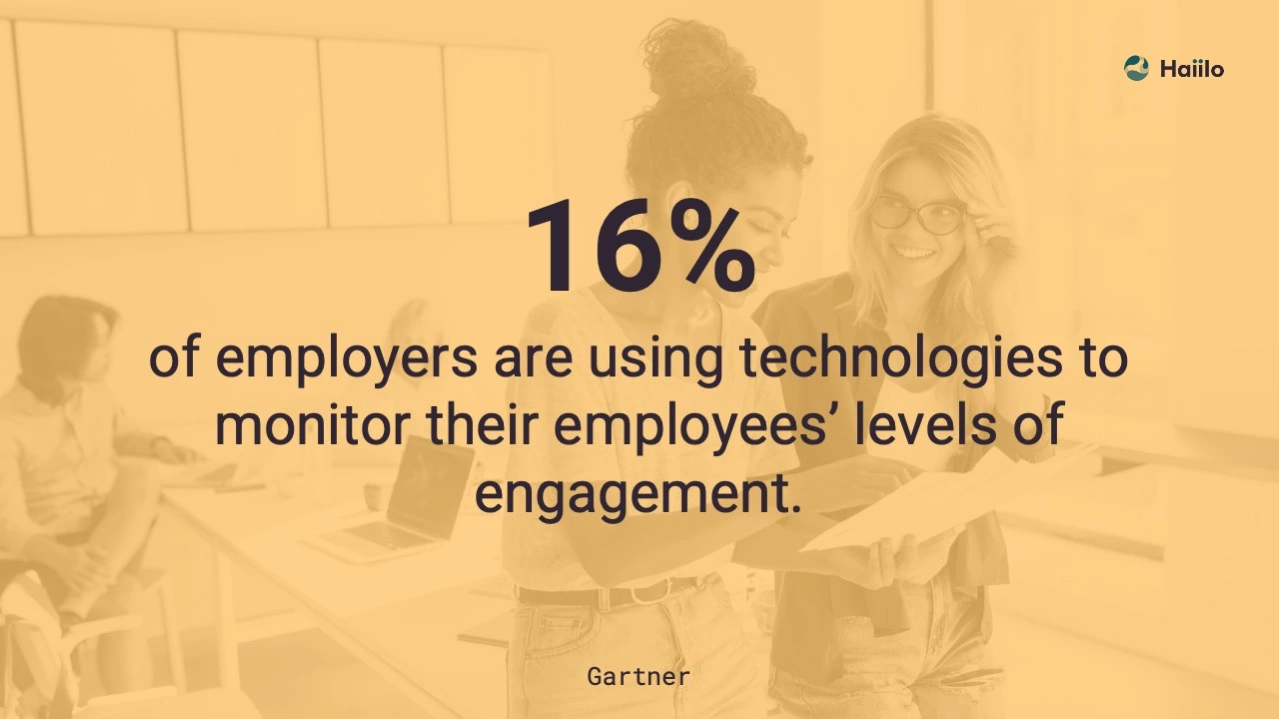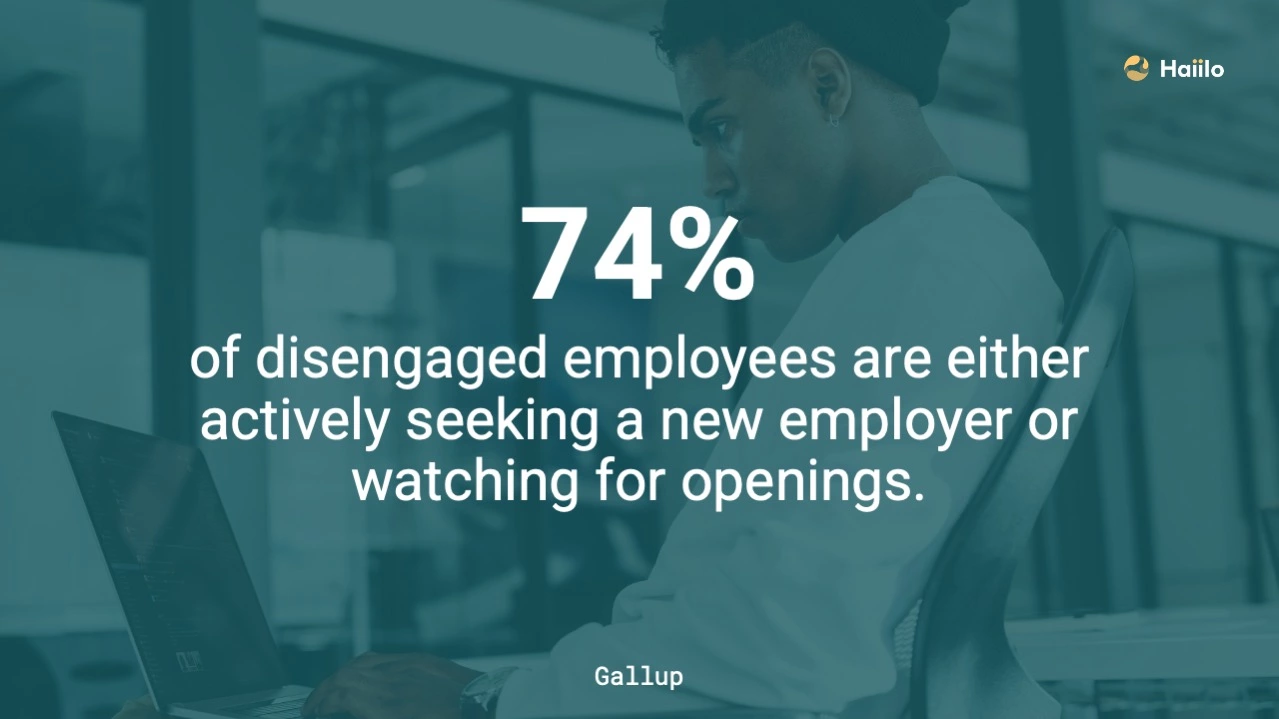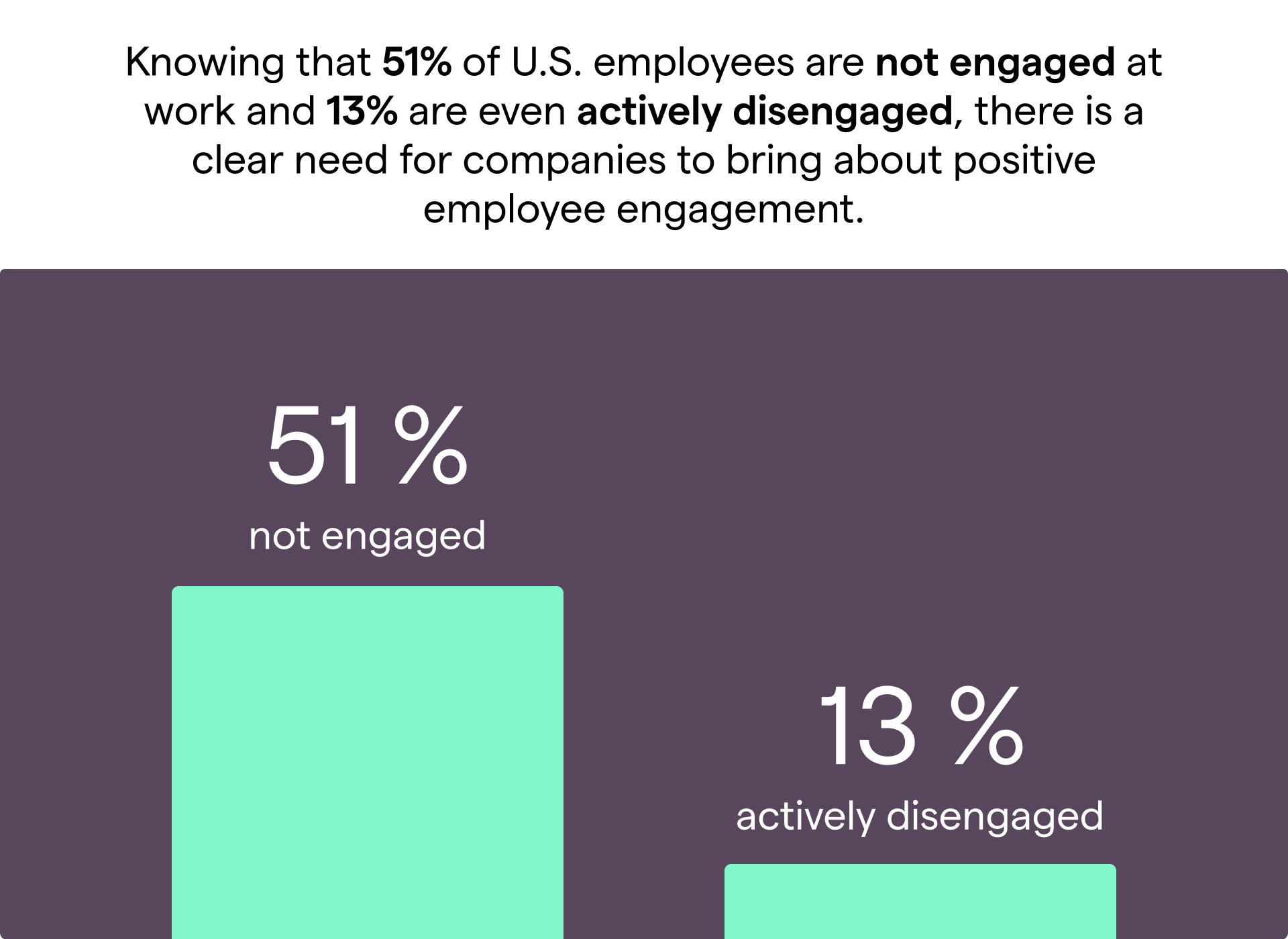It’s an indisputable fact that employee productivity and a successfully growing business are a direct result of how engaged employees are.
Since the pandemic the question is not only about keeping your employees engaged in the workplace, many organization now face the difficulty of keeping their remote employees engaged and motivated.
While conducting bi-annual or annual employee surveys might be a working strategy for some, a thorough understanding of the drivers of employee engagement can provide better insights into employee motivation and productivity. In this blog, we’ll uncover some of the most popular drivers of employee engagement that influence directly your company’s success.
Discovering the Main Drivers of Employee Engagement
As humans, we all desire for our day-to-day tasks — whether it be at the office or at home — to have a sense of meaning and purpose. In the workplace, this helps drive the passion for being professionals and being good at what we do.
For this to occur, we require a sense of motivation and engagement in our day-to-day tasks at the workplace.
So, what are our most critical main drivers of employee engagement?
- Employee Recognition
- Organizational Culture
- Employee Feedback
- Work-life Balance
- Surrounding Team
- Roles & Responsibilities
- Sense of Purpose
- Empowering Employees
- Professional Development
- Nurturing Line Manager
- Expectation Management
- Honest Leadership and Strategy
Let’s take a deeper dive into each employee engagement driver and each one’s value and importance to help your organization continue the discussion and take the next steps to improve its employee engagement initiatives.
Distinctiveness and Importance of Each Employee Engagement Driver
1. Employee Recognition
Employee recognition comes in at No. 1 on our list for a reason. It’s the No. 1 driver of employee engagement and is the best way to make employees feel valued and motivate them to give their all. However, the occasional thank you in the hallway or shoutout in a company meeting isn’t enough to impact engagement.
Organizations that value this driver of employee engagement typically have an employee recognition program in place to help facilitate engaging social recognition and monetary recognition system, whereby fellow employees can acknowledge one another via liking and commenting to accumulate points they can then redeem for physical rewards and even money.
2. Organizational Culture
An organization’s culture will have an enormous impact on any workplace’s employee engagement successes or failures. And that’s why culture as an employee engagement driver can make or break your company. Employees that feel excluded within the very own company they are supposed to be servicing aren’t engaged and are already halfway out the door. From the very top, everyone throughout the organization needs to understand the company vision, mission and reason for existence.
💡: Read more about company values
And yes, most notably, this starts with the CEO. Affecting this driver of employee engagement doesn’t happen in a day or even a month, so patience and prioritization will be necessary. And make sure to include employee feedback as you make adjustments.
4. Work-life Balance
Stress. Fatigue. Burnout. Few years ago, employees would still push through exhaustion for monetary, but the pandemic has changed it dramatically. Today this employee engagement driver leads to greater satisfaction and work productivity.
Prioritize your employees’ ability to balance their personal and family life with work to allow them the flexibility and time they need to recharge. Just as your employees have their own unique experiences and expertise, each is built and has experienced differently and has varying needs, family obligations, including young children and the recuperating pet from his recent surgery.
Make sure that flexibility for employees is in your organization’s mantra to ensure that work-life balance is being preserved. And don’t stop there. Explore this driver of employee engagement to help your team members stay both physically and mentally healthy, whether they’re at the workplace or spending time with loved ones.
5. Surrounding Team
Feel like your job performance is better with colleagues around? Look forward to going to work and discussing and planning with your team? If you answered yes to both, you’re on the path with a quality and valued team.
In fact, colleagues within your team can be some of the biggest drivers of employee engagement. Their honesty, cooperation, and willingness to assist and collaborate all help to inspire employee engagement across the workplace.
6. Roles & Responsibilities
“So, what do you want to do when you grow up?” It’s the question we all heard growing up as kids, but are employees in your organization still left wondering? If their current role isn’t aligned with their interests, expertise or experience, staying engaged will be difficult for them.
So, make sure they’re set for success and put them into roles where the job and day-to-day tasks are a perfect march. Allow employees to have and own up to the responsibilities and even titles they want, and you’ll see employee engagement sore.
7. Sense of Purpose
Are employees familiar with and well-versed in your organization’s mission, and if so, do they genuinely believe in it? The sense of purpose as an employee engagement driver can keep employees’ motivation high.
Actions speak louder than words, however. So, your organization’s purpose and values need to be followed and put into action every day by senior leadership and management and live by those values. Doing so ensures employees will follow the leaders.
8. Empowering Employees
Employee empowerment has a plce among the drivers of employee engagement for a reason. When employees are trusted, they tend to take more responsibility and generally perform better at work.
Provide employees with the keys and access to all the necessary tools and resources to succeed from their very first day. It starts with the fundamentals of ensuring they have the right technology, support and even time resources required to do their day-to-day tasks well.
Once those basics are in place, explore ways to provide them with professional development and growth opportunities, including training and coaching that will help them grow. In doing so, you’re nurturing a trusting and engaged workforce for your organization.
9. Professional Development
As a continuation and direct tie-in to No. 8’s Empowering Employees, offer your employees opportunities to grow professionally. These can be in the form of online courses, attending an event or conference (in-person or virtually) featuring industry experts in your organization’s field, or even providing them with continuing education opportunities, including learning a new language or enrolling in an MBA program at the university.
Be mindful and sensible that these should be opportunities for employees to do on their own intuition, instead of being a requirement. It’s okay to have a development requirement but involve the employee in the selection and path. Employees should feel reassured in balancing own day-to-day tasks and development plans, so don’t make it a burden by forcing a specific development program without the employee’s buy-in.
10. Nurturing Line Manager
No. 10 here should be required reading for all line managers. Have you experienced a manager who refused your vacation requests, was dismissive of your input at team meetings, or sent you emails and text messages after hours, including weekends? If so, you were undoubtedly looking for a new gig with a company that would better appreciate and respect you.
The relationship between a manager and employee will make or break a motivated and engaged employee. In a recent study, Gallup concluded that it’s managers that are 70% of the reason behind employee engagement scores, which makes them one of the most important drivers of employee engagement. The lesson here is to ensure your managers respect your talent, aren’t micromanaging and are actionizing based on employees’ feedback and concerns.
11. Expectation Management
Confused and frustrated employees can’t succeed in their day-to-day tasks if they don’t know what’s expected of them. That poor communication from leaders and managers, including some of the missing elements previously mentioned, like missing feedback, will only disgruntle your employees and drain them of their motivation.
Ensure you’re setting them up to succeed and improve. That means ensuring all your leaders and managers are properly trained to clearly and seamlessly communicate goals while being transparent. And even when there’s a crisis or during rough times, managers need to maintain that sense of transparency and openness.
12. Honest Leadership and Strategy
Leaders of your organization should be setting examples for your talented workforce to follow and aspire to be. Employees who don’t believe in their company or the leadership that’s driving it won’t feel easily engaged, if at all engaged.
Key decisions from senior leadership and management should always be transparent. They should also make a point to recognize both individual employees and specific teams across the organization to keep a motivating culture.
Drivers of Employee Engagement Make Huge Impacts
The outcomes for an organization from an engaged workforce are absolute game-changers to the business its culture. Considering the above-mentioned employee engagement drivers might result in many ways. Engaged employees are known for:
- Actively searching for new ways to simplify tasks and processes
- Respecting colleagues and stakeholders and seeking ways to help them grow and improve
- Believing in the company, its mission and its reason for existing
- Going above and beyond to be relied on when there’s a jam or crisis
- Staying updated and abreast within their areas of expertise
- Exuding a positive attitude about the company, including colleagues
- Viewing the whole landscape, rather than just individual areas of expertise
- Continuously identifying with the company or organization
It’s vital for your business culture, growth and retaining your most valuable employees for your organization to have a set strategy. Use the drivers of employee engagement we listed above as a starting point to have some honest discussions.




